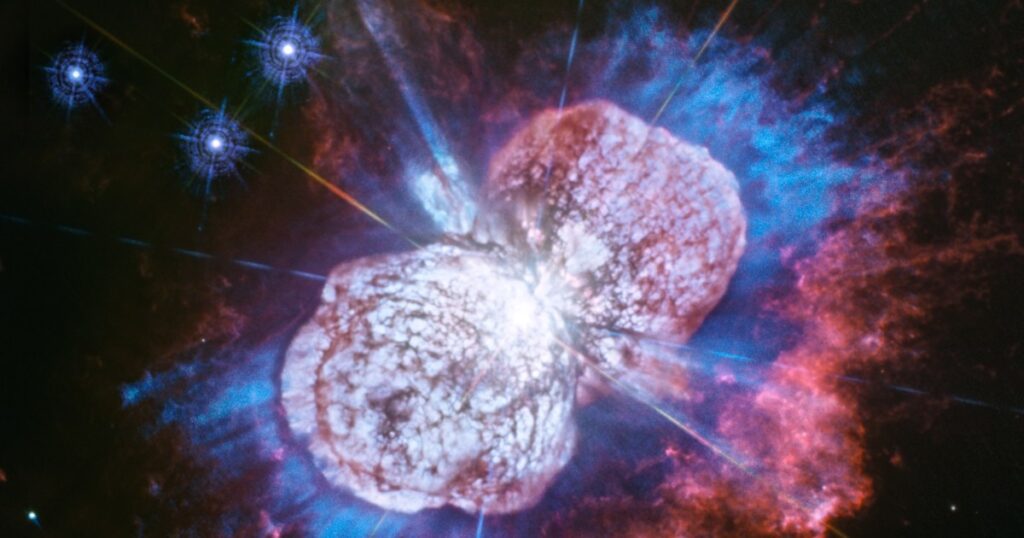Sign up for the Starts With a Bang newsletter
Travel the universe with Dr. Ethan Siegel as he answers the biggest questions of all.
It happens all over the internet and news media every day: a new scientific study, making an extraordinary-if-true claim, gets elevated to prominence. You’ve probably seen many just over the past month, including:
None of these things are true, of course, despite the assertions of the researchers who originated these claims. But unless you’re a scientist yourself — and, in particular, a scientist well-versed in these aspects of physics and astronomy — it’s not readily apparent where these claims have gone wrong.
In fact, there’s actually a simple formula to elevating this kind of work to popular prominence: work that ranges from mediocre-but-speculative research to completely unsupported claims that bear no relation to the actual data. All you have to do is make an extraordinary claim that defies the current scientific consensus, backed up by a mix of quality data and unsupported/unsubstantiated assertions or speculations, get it published somewhere (whether in a peer-reviewed publication or otherwise), and then issue a press or media release that overstates the case in favor of this new interpretation. Follow those steps, and it’s all but inevitable that you’ll get your 15 minutes of fame with your bold claim: a sensational science headline that’s all but guaranteed to go viral.
Here’s why that’s nothing more than a devious trick that exploits several problems with our modern communication landscape.
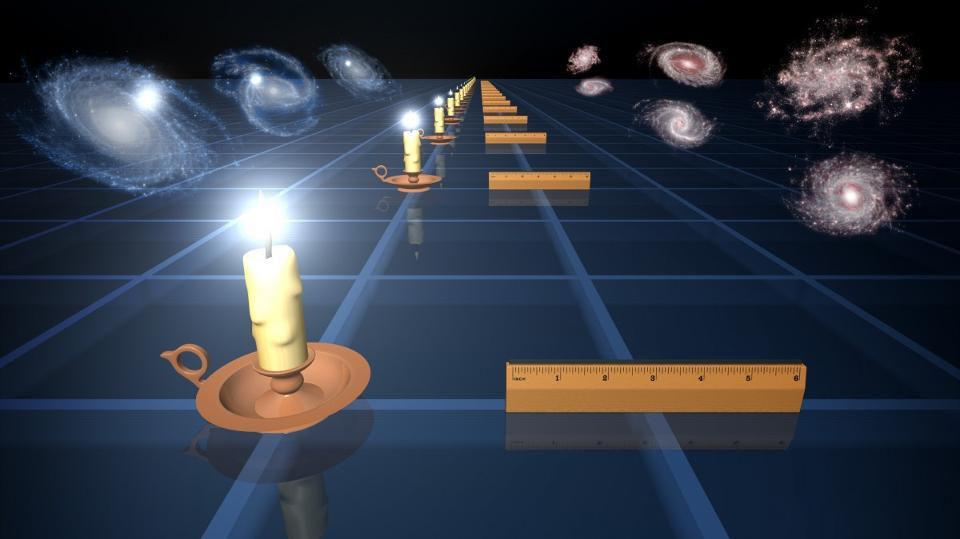
Standard candles (left) and standard rulers (right) are two different techniques astronomers used to measure the expansion of space at various times/distances in the past. Based on how quantities like luminosity or angular size change with distance, we can infer the expansion history of the Universe. Standard candles involve looking at objects whose intrinsic brightness is known at all cosmic distances, while standard rulers involve looking at features such as the average separation distance between any two galaxies (imprinted from baryon acoustic oscillations during the early stages of the Big Bang) that evolve as the Universe expands.
The first thing you have to understand is what the pinnacle of modern science is: the current state of scientific consensus. This is often presented, in popular media, as a fossilized and incomplete edifice that must be challenged and smashed: usually by a bold, revolutionary idea that’s just as out-of-the-box as heliocentrism was to a geocentric worldview, as quantum mechanics was to a purely classical-and-deterministic worldview, or as relativity was to a Newtonian worldview.
But there have been precious few advances throughout all of science’s history — and pretty much zero in the past 50 years — that have taken place in that fashion.
That’s because there’s a fact that’s generally underappreciated by many: the general public, journalists, and even scientists operating outside of their field of expertise. That fact is simply that science, particularly hard science like chemistry, physics, and astronomy, is now extraordinarily well-developed. We have tremendous amounts of high-quality data, a very advanced set of methods for acquiring, calibrating, and analyzing that data, and a remarkably successful set of theories and models that enable us to make sense of that data. Our scientific foundation, which includes the full suite of data and the scientific method for self-correcting and making progress, is sturdier and stronger than at any point in history.
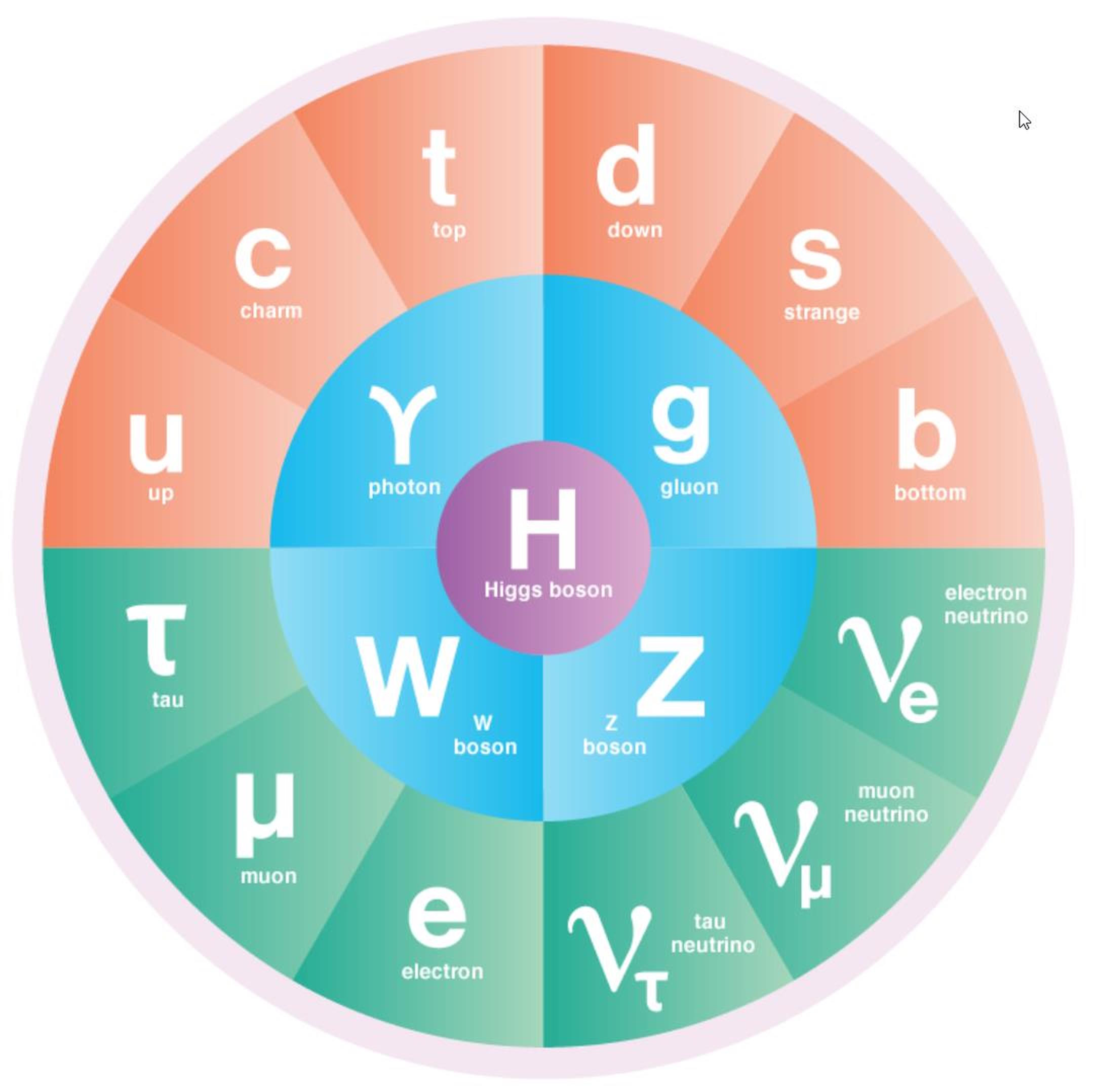
Although there are many similarities and differences within the Standard Model: between quarks and leptons, between fermions and bosons, between particles and antiparticles, etc., many conventional symmetries only hold under specific conditions. However, the combination of changing particles for antiparticles, objects for their mirror-image reflections, and a forward-moving clock for a backward-moving one, also known as CPT symmetry, must never be broken.
To take up the position of the scientific consensus is the default position of our current state of knowledge. A scientific consensus also does not exist in a vacuum; when there is no data clearly indicating or favoring one interpretation over another, consensus does not arise. We have reached a scientific consensus on issues like:
- the Standard Model of particle physics,
- the existence of dark matter and dark energy,
- the hot Big Bang set up and preceded by a phase of cosmic inflation,
despite the bevy of popular articles you can find questioning or undermining these established scientific facts. For contrast, there is no consensus about issues like the origin of the matter-antimatter asymmetry in the Universe (we haven’t established how it arose), which interpretation of quantum mechanics is the right one (all still-viable interpretations can lay equal claims to validity), or at what level the Universe departs from perfect spatial flatness (we’ve established that it’s curved at a level that’s below 1% of the observable Universe, but whether it’s curved at a 0.01% level, a 0.001% level, a 0.0001% level, etc., has not been established).
The way that science works, in general, is that when it comes to any problem or puzzle or issue, we have to consider the full suite of available evidence. In determining what a “consensus” position should be, we most heavily weight the best and strongest evidence that we have. We use the tools and instruments, the most and best data, the best calibration methods, and the best analytical tools and techniques to arrive at our results. We then base our best conclusions on those results; that’s the modern scientific method.

The map (top) of the temperature fluctuations in the CMB from Planck, along with the temperature fluctuation power spectrum (middle) as measured. The bottom two panels show the simulated temperature fluctuations on various angular scales that will appear in the CMB in a Universe with the measured amount of radiation, and then either 70% dark energy, 25% dark matter, and 5% normal matter (left), or a Universe with 100% normal matter and no dark matter (right). The differences in the number of peaks, as well as the peak heights and locations, are easily seen.
However, learning what the scientific consensus is, including what the evidence supporting it is and how we reached and reinforced those conclusions, is rarely rewarded from a science journalist’s point of view. Reporting on the latest results — putting them in the proper context of what was known previously and pointing out where they might hint at taking us next — is rarely rewarded with clicks, engagement, and virality. It’s those latter criteria that most publishers care about these days, and that means writers, editors, and higher-ups at media companies strive to maximize their readership, often by whatever means are necessary.
That means the most common approach to the notion of a scientific consensus, at least in modern journalism, comes from attempts to undermine or contradict it. Sometimes this is scrupulous and legitimate: a scientific consensus can be challenged on its strongest fronts, where novel, superior evidence comes in and causes us to re-evaluate our older conclusions. (This was the case for the recent Muon g – 2 experiment and theory mismatch, which led not to a scientific revolution, but to a superior understanding of how hadronic vacuum polarization works.) This is what we all hope for, and how we can scrupulously approach science: by looking to the Universe itself for the necessary data to find out whether our best model of reality has any legitimate holes in it, and whether it can, in fact, be bettered.

This image, composed of two figures from the Muon Theory Initiative’s 2025 white paper, shows at top the differences between theory and experiment depending on which leading order hadronic vacuum polarization input is used. The green results are all r-ratio (experimental data input) inputs, while the blue lines are all lattice QCD inputs. The WP25 designation reflects what’s chosen in the 2025 white paper, with the lower table showing the differences between the 2020 and the 2025 white papers.
The other approach to undermine the scientific consensus, however, is both far less scrupulous and also far more common. Instead of taking the methods that led us to our best picture of the Universe and improving on them, researchers often do the equivalent of “smearing vaseline on the photographer’s lens” to make that picture blurrier and less focused. Instead of taking the best of everything that science has to offer:
- the full suite of the best data,
- analyzed using the best available methods,
- standardized by leveraging the best calibrations,
researchers instead choose to focus on inferior versions of what’s available. Sometimes, they use only a partial subset of the full suite of data, leading to cherry-picking fallacies. Sometimes, instead of the best data, they use only lower-quality data, which enables them to arrive at alternative conclusions, often with much larger (and sometimes unstated/unquantified) errors and uncertainties. Sometimes, instead of using the best methods for analyzing the data, they choose an inferior, highly uncertain, otherwise non-optimal method, and sometimes, instead of using a well-established standard calibration, they leverage an alternative calibration technique.
If you do any or all of these things, you might well arrive at a different conclusion from the scientific consensus, but that doesn’t mean there’s any sort of scientific merit or validity to what you’ve done.
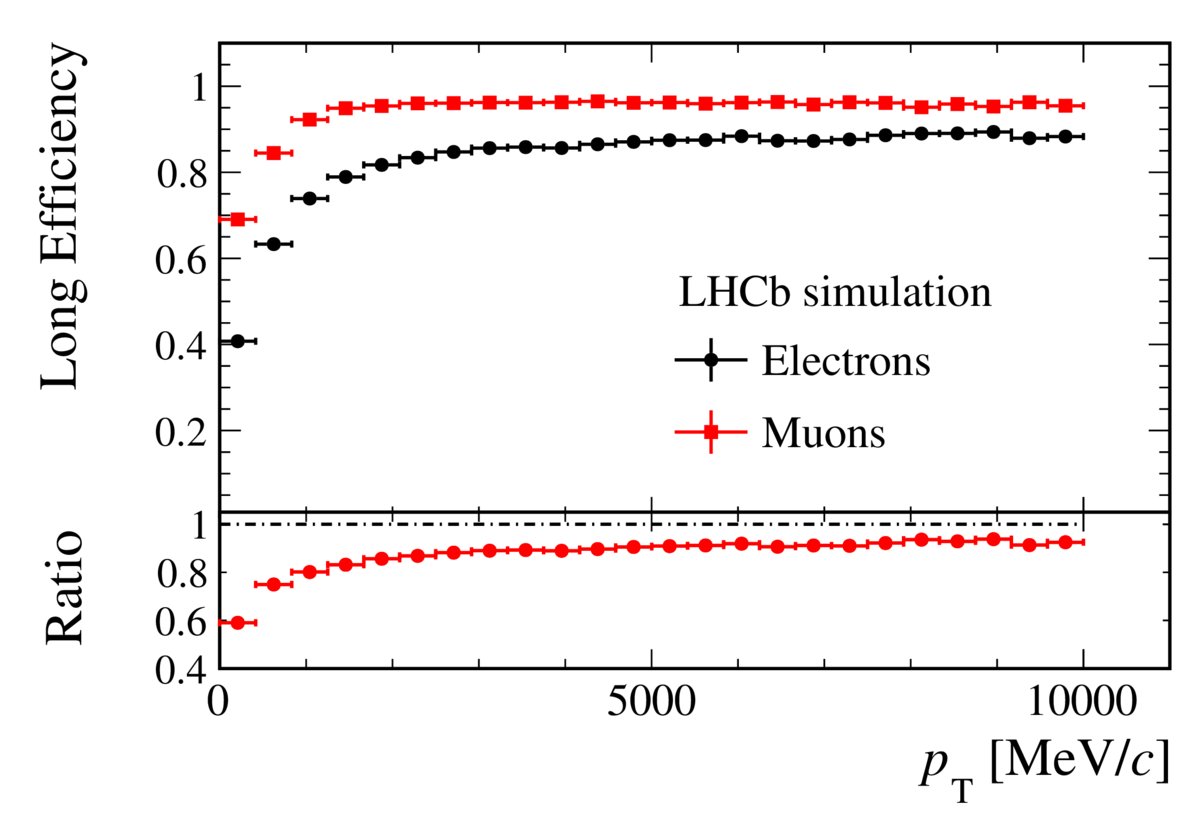
The LHCb detector has a known and quantifiable difference in detection efficiency between electron-positron pairs and muon-antimuon pairs. Accounting for this difference is an essential step in measuring the probabilities and rates of decays of B-mesons into kaons plus one lepton-antilepton combination over another. They have now shown that lepton universality appears to be true, as the properly calibrated ratios of electron-positron pairs and muon-antimuon pairs appears to be indistinguishable from 1.0 with a proper recalibration incorporated into 2022-era analysis and later.
To be clear: there really isn’t anybody who thinks that today’s scientific consensus is the end of the story of science; it’s only our best current approximation for how to best model reality. Being able to raise challenges to the scientific consensus is a vitally important part of the scientific endeavor as well; it’s by looking for cracks in our established foundations that we hope to hit on ways to go beyond what we currently know.
By the same token, a lot of the important scientific research that gets done isn’t about immediate revolutions, but rather first steps toward them: what a scientist might refer to as “playing in the sandbox” or “developing a toy model.” You shouldn’t confuse these for actual scientific revolutions, but everyone should be aware that this type of exploratory work is frequent and usually encouraged by the community, even if such work rarely gains traction because of the problems that novel approach faces.
However, when we come back to reality, we are always compelled to engage with the full suite of collected evidence in a scrupulous and honest fashion. Science always benefits from more and better science, and is never afraid of new evidence, even if that evidence appears to contradict the presently-held consensus view. But there are circumstances where everyone loses: when bad actors — whether scientists or not, whether it’s because they’re deliberately being deceptive or because they truly believe what they’re asserting — having failed to make headway in the community based on the scientific merits of their arguments, instead try their case in the court of public opinion.

This chart shows the 35 possible galaxies to choose from that have resolvable stars (Cepheids, tip of the red giant branch, or JAGB) and also were host to at least one type Ia supernova. The light red galaxies show which galaxies were included in the CCHP results; the dark red were excluded.
There is a clear, straightforward path to making such an impact, and having your mediocre, contrarian research (whether legitimate research or pseudoscience) going completely viral. All you have to do is follow this simple formula.
- First, you publish a paper — or, even better, a series of papers — that challenges or attempts to undermine the scientific consensus about any topic at all.
- Next, you submit your work to someone who works in public/media relations for your home University, research institute, or parent organization, and ask them to craft and disseminate a press release. (Or, if you’re a self-promoter, to just do it yourself.)
- After that, the press release goes out, making even more sensationalistic claims than the original paper did, frequently overselling the results and rarely sourcing mainstream, appropriately skeptical voices, painting this as a Galileo-type revolutionary against the oppressive scientific establishment.
- And finally, you just wait for the unmerited attention to arrive as various journalists — journalists who are either untrained in how science works or who mainly care about maximizing engagement despite knowing full well how science works — report uncritically (or insufficiently critically) on the work.
That’s all it takes, and this path all but guarantees that your story, regardless of merit, will be catapulted into the science news conversation. This is only possible because we currently live in a reality where it’s deemed to be more important to tell “both sides” of any story rather than to report on what’s factually correct. The veracity of the claim doesn’t matter, and that’s because it’s attention (and clicks) that drives journalism’s value today, rather than an adherence to accuracy or truthfulness. As a result, this unscrupulous path isn’t just tolerated; it’s incentivized.

These flux maps show the spectrally integrated flux for 3I/ATLAS observed with JWST’s NIRSpec instrument, showing scattered light from coma dust at 1.2 microns (panel a), carbon dioxide at 4.3 microns (panel b), water at 2.7 microns (panel c), and carbon monoxide at 4.7 microns (panel d). Note the weak, consolidated nature of the water and carbon monoxide, compared to the bright, diffuse carbon dioxide signal.
There are plenty of examples that abound of exactly this phenomenon. Just to name a few, consider the following.
- There’s the issue of the Hubble tension: where different classes of methods for measuring the expansion rate of the Universe yield different, mutually incompatible results. By picking a non-optimal method and choosing a subset of the data, some claim that there is no tension: a claim that can easily be debunked by considering the full suite of the available evidence.
- There’s a kind-of debate over the nature of the interstellar comet 3I/ATLAS, with the entire scientific community dedicated to revealing the exciting properties of this novel object of interstellar origin, and one grifting charlatan promoting unscientific explanations based on counterfactual claims.
- There’s the recent claim that the Universe is lumpy and inhomogeneous (which it is) and that dark energy doesn’t exist. This assertion is undermined by actual measurements of how lumpy and inhomogeneous the Universe is: contradicting the alternative theory’s predictions by a factor of more than a million.
- There are frequently claims that suggest that type Ia supernovae don’t indicate an accelerating Universe, but such claims always rest on using incomplete data, inferior calibrations, and ignoring the multiple lines of evidence that support dark energy’s reality..
- There’s a recent viral claim that the Universe is 26.7 billion years old rather than the accepted 13.8 billion years old, again based on dubious analysis, ignoring the strongest data, and succumbing to a few fundamental misunderstandings about cosmology in general.
- And there was even an anti-Big Bang argument put forth just a few months ago that the cosmic microwave background might not be of cosmic origin, but that it might merely be reflected light emitted from galaxies. This claim, like all the others listed here, is easily refuted by the actual data we have.
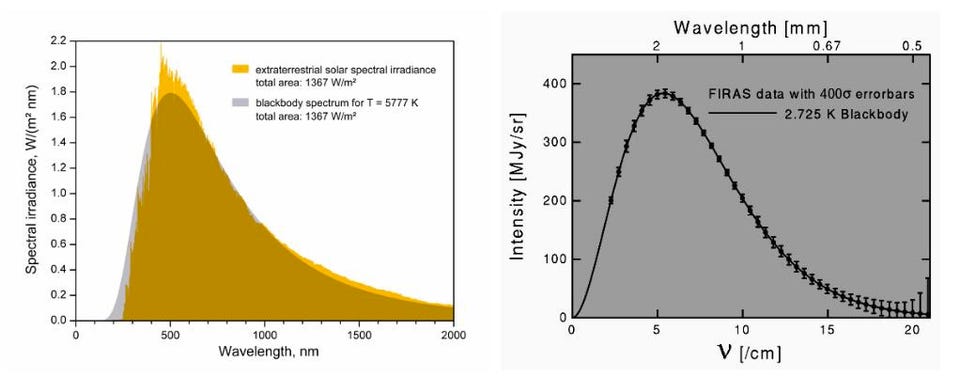
The Sun’s actual light (yellow curve, left) versus a perfect blackbody (in gray), showing that the Sun is more of a series of blackbodies due to the thickness of its photosphere; at right is the actual perfect blackbody of the CMB as measured by the COBE satellite. Note that the “error bars” on the right are an astounding 400 sigma. The agreement between theory and observation here is historic, and the peak of the observed spectrum determines the leftover temperature of the cosmic microwave background: 2.73 K.
And yet, it’s not like there’s an effort to stop this repetitious madness. Scrupulous scientists and science communicators shouldn’t have to spend their efforts endlessly engaging with and debunking meritless nonsense. That’s always an uphill battle under the best of circumstances: in a healthy environment for science news. And yet, because this is how science news now “normally” works, every few weeks there’s a new viral claim that requires debunking. For those of us who are deeply interested in science, there’s a fundamental question that we are compelled to care about the answer to more than any other: the question of simply, “What is true?” In other words, “What is our best picture of reality, and how did we arrive at it?”
If everyone knew those answers, then it would be impossible for these dubious claims to take hold. The general public wouldn’t be so quick to believe in a magical purported superconductor, or in space engines that violate the fundamental conservation laws of the Universe. Overthrowing the scientific consensus isn’t an easy task, and requires that all three of these key hurdles be cleared:
- Can your new theory achieve and reproduce every one of the successes that the old, prior consensus theory achieved?
- Can the new theory adequately and comprehensively explain a phenomenon that the old, prevailing theory cannot?
- And can your new theory and the old theory be compared against each other, with differing predictions for an observable or measurable phenomenon teased out of them, and can we then go and measure that phenomenon to determine which one better represents reality?
These three hurdles ask for a lot, and extremely few challengers to the scientific consensus can rise to it.

The results of Arthur Eddington’s 1919 expedition, which confirmed and validated the predictions of Einstein’s general relativity, while disagreeing significantly with the alternative (Newtonian) predictions, was the first observational confirmation of Einstein’s new theory of gravity. The amount that starlight was deflected by during a total solar eclipse was a key prediction that was unique to Einstein’s new theory.
It’s happened before, of course. Einstein’s relativity superseded Newtonian mechanics. Einstein’s general relativity went far beyond Newtonian gravity. Quantum mechanics replaced classical mechanics, and then quantum field theory went still further. The hot Big Bang became the leading theory of our cosmic origins, and cosmic inflation added on to and improved the hot Big Bang. Scientific revolutions do indeed happen, and our world is all the richer for it when they do.
But we cannot continue, as a scientifically literate society, to engage in this biased and unfair game of whack-a-mole, where non-meritorious ideas get elevated to become mainstream, while the actual scientific consensus gets portrayed as “just another unsatisfying theory.” The reality of the matter is that our consensus scientific theories only became the consensus because they already cleared those above three hurdles, and because no other theory has come along to displace it yet. The reality is that our consensus theories are already making the best possible approximation of reality that current knowledge can lead us to, and that new research challenging it isn’t being suppressed at all, but is rather cultivated as an important avenue for scientific growth within the community.
And we should keep this in mind: just because a paper passed peer review doesn’t mean that everything inside it is correct. The only thing that’s being suppressed are dubious claims that lack the necessary evidence to support them. This is a mandatory aspect to science: we must demand that the strength of the evidence matches the grandiosity of any claim we encounter. If we fail to do that, we run the risk of elevating meritless ideas and discounting actual scientific knowledge. That’s how we arrive at anti-science positions in our society, including about life-and-death matters like the climate, vaccines, pandemics, and food production. The science itself is agnostic about how we use it, and whether we accept it or not. It’s up to us, as humans, to make wise decisions about those matters.
Sign up for the Starts With a Bang newsletter
Travel the universe with Dr. Ethan Siegel as he answers the biggest questions of all.

